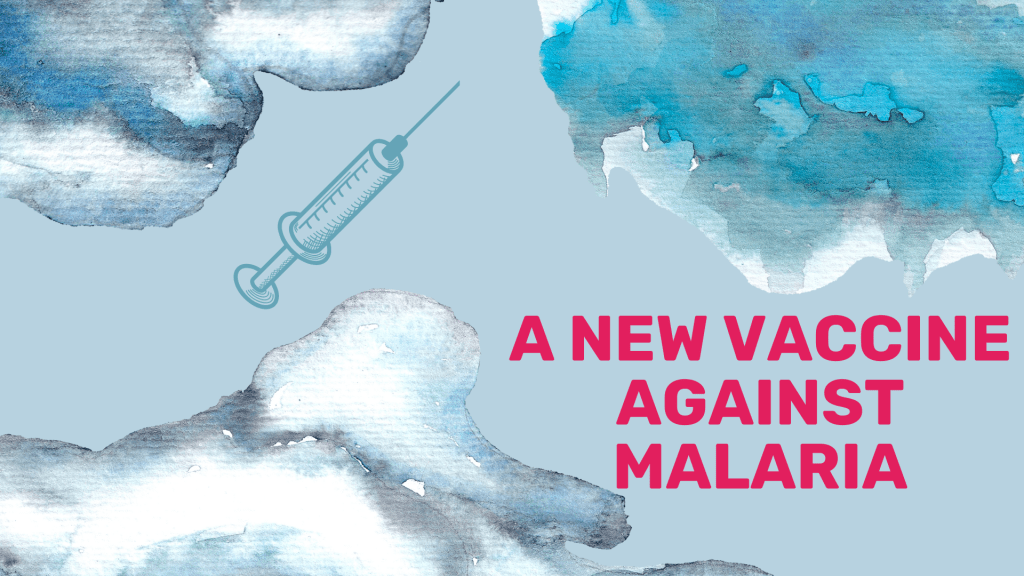A new vaccine against Malaria
This month saw another breakthrough in the treatment and prevention of malaria, this time with the publication of the phase 2 clinical trial results of the new University of Oxford R21 vaccine against malaria. This vaccine demonstrated an 80% efficacy against malaria, the highest efficacy ever seen in a malaria vaccine. Professor Adrian Hill, co-creator of the Astra Zeneca vaccine, describes it as “the best malaria vaccine yet” and has stated that it could help to reduce deaths from Malaria by 70% by 2030 and could eradicate it by 2040¹. This is a stunning milestone in the campaign to eradicate malaria, an extremely promising therapeutic which could help us end malaria for good. This new vaccine could be viewed as an intervention with minimal risk, and maximal gain- with this development, the case against using the extremely risky, untried and poorly tested gene drive mosquito as a tool to end malaria comes further into question.
Malaria vaccine development has been historically plagued with difficulties, with over 100 potential candidates and so far only one approved vaccine, Mosquirix, approved in 2021². This difficulty stems from the fact that the Plasmodium parasite has many developmental stages, meaning there are thousands of potential targets³. The Mosquirix vaccine has had a difficult start, with a lower efficacy of around 30% for 4 years and is limited in the number of doses that can be produced. That said, there is still good data available for its effectiveness when used in combination with preventative chemotherapy, with one recent study from the London School of Hygiene and Tropical medicine showing a 70% reduction in the chance of hospitalisation and severe illness or death from malaria⁴. However, the new R21 vaccine, developed at the Jenner Institute at Oxford University, shows the highest efficacy yet seen in a malaria vaccine, the first of its kind to surpass the minimum 75% efficacy goal set by the World Health Organisation.
The R21 vaccine trial took place in Burkina Faso, and was carried out in 450 infants between 5-17 months old, the demographic most in need of treatments and prevention of malaria, with 16 percent of deaths in children in Africa caused by malaria. The cohort was split into two groups receiving the new vaccine and one control group: Two groups received a dose of the vaccine with either a higher or lower amount of immune-stimulating adjuvant respectively and the other group received a rabies vaccine as the control group. All of the children received three doses four weeks apart followed by a 4th dose one year later, and were followed for the full two years to see how the vaccine (or control treatment) affected the cases of malaria observed within the cohort.
The higher adjuvant dose performed best, with an 80% relative risk reduction of contracting malaria in the high-adjuvant group compared with the control group, with no serious side-effects reported. The R21 vaccine targets the Plasmodium parasite before it develops in the blood shortly after someone is bitten and is based a small protein from the immature malaria parasite combined with the Matrix-M adjuvant to help increase the immune response⁵. Despite the success, before approval the R21 vaccine must still be tested in larger groups during the ongoing phase 3 trials, involving 4,800 children in Burkina Faso, Mali, Kenya and Tanzania. Professor Halidou Tinto, the trials principal investigator, is confident that the efficacy will be replicated in these phase 3 trials.
R21 marks a real revolution and beacon for hope in the treatment and prevention of malaria. The path towards a vaccine for malaria has been far from smooth, but the potential for bringing us closer to the eradication of malaria in Africa is huge. The vaccine is both very effective, easy to produce and, very importantly, possible to produce for a few dollars- it is possible to produce 200 million doses per year reasonably through the Serum Institute of India and could therefore be rolled out quickly and widely. Professor Tinto hopes that the vaccine will be used from 2023 in around 250,000 children in Burkina Faso, thus maximising the beneficial effects of the vaccine to those who need it most on a short timeline⁶. With innovative new treatments and preventatives emerging such as the R21 vaccine, the chances of drastically reducing the malaria burden and even achieving eradication are looking ever more likely.
References
¹’⁶Anon, 2022. New malaria vaccine comes a step closer as experts say it’s ‚the best yet‘. The Guardian. Available at: https://www.theguardian.com/global-development/2022/sep/07/malaria-vaccine-truss-cut-funding [Accessed September 26, 2022].
² Laurens MB. RTS,S/AS01 vaccine (Mosquirix™): an overview. Hum Vaccin Immunother. 2020 Mar 3;16(3):480-489. doi: 10.1080/21645515.2019.1669415. Epub 2019 Oct 22. PMID: 31545128; PMCID: PMC7227679.
³ Mahmoudi S, Keshavarz H. Malaria Vaccine Development: The Need for Novel Approaches: A Review Article. Iran J Parasitol. 2018 Jan-Mar;13(1):1-10. PMID: 29963080; PMCID: PMC6019592.
⁴ Chandramohan, D. et al., 2021. Seasonal malaria vaccination with or without seasonal malaria chemoprevention. New England Journal of Medicine, 385(11), pp.1005–1017.
⁵ Datoo, Mehreen & Magloire, Natama & Somé, Athanase & Bellamy, Duncan & Traore, Ousmane & Rouamba, Toussaint & Tahita, Marc & Ido, N & Yameogo, Prisca & Valia, Daniel & Millogo, Aida & Ouedraogo, Florence & Soma, Rachidatou & Sawadogo, Seydou & Sorgho, Faizatou & Derra, Karim & Rouamba, Eli & Ramos-Lopez, Fernando & Cairns, Matthew & Tinto, Halidou. (2022). Efficacy and immunogenicity of R21/Matrix-M vaccine against clinical malaria after 2 years‘ follow-up in children in Burkina Faso: a phase 1/2b randomised controlled trial. The Lancet Infectious Diseases. 10.1016/S1473-3099(22)00442-X.

